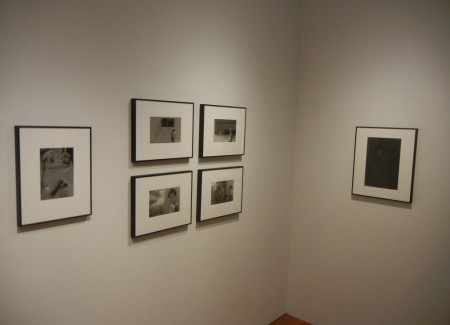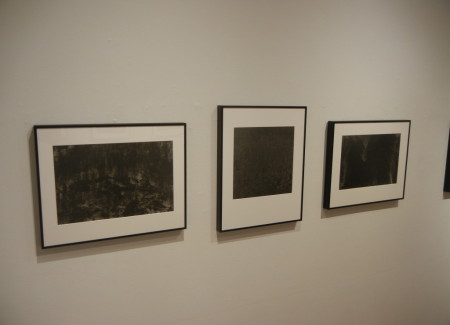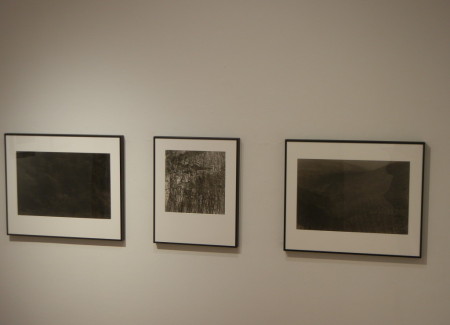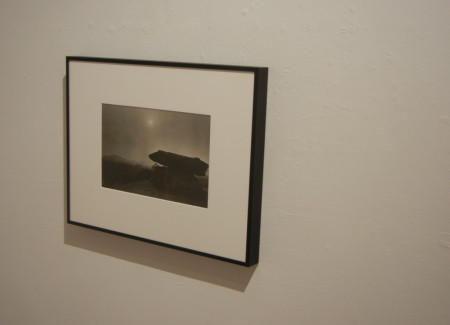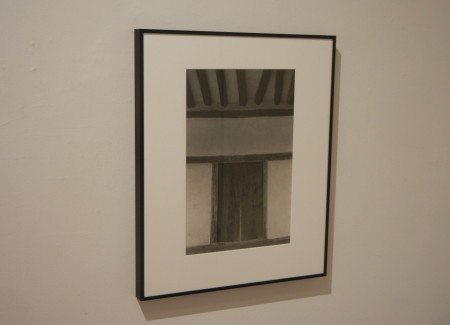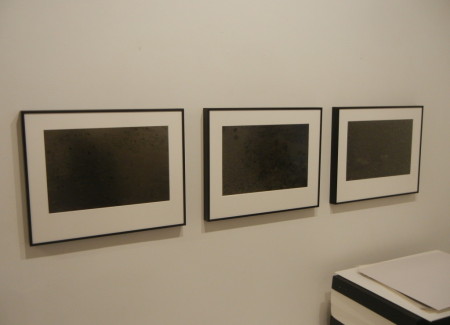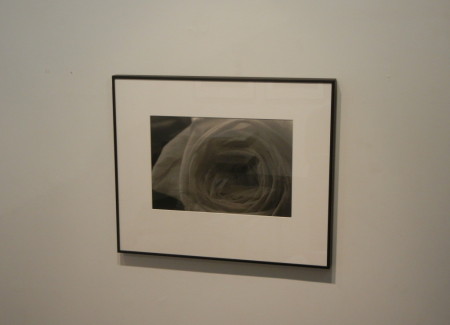JTF (just the facts): A total of 31 black and white photographs, framed in black and matted, and hung against white walls in the main gallery space and the back office area. All of the works on view are gelatin silver prints, made between 1965 and 2010. Physical sizes range from roughly 7×10 to 13×20; no edition information was provided on the checklist. This is the Korean photographer’s first solo show in the United States. (Installation shots below.)
Comments/Context: Across a photographic career of some 50 years, it’s isn’t at all surprising to find an artist experimenting with different styles and subject matter. So the fact that this mini-retrospective of the work of Korean photographer Joo Myung Duck might be mistaken for a mixed group show is certainly a kind of evidence of the continual evolution of his approach. This show begins with 1960s era documentary work, makes a quick stop in the 1970s for rural portraits, transitions to traditional architectural details and lusciously dark landscapes from the 1980s and 1990s, and finishes with recent floral studies made in the past few years. It’s a whirlwind tour of photographic investigation, from the social and historical to the formal and natural.
The most innovative pictures on view here are Joo’s intensely black landscapes, where the sky and horizon have been cropped out, turning the mountainsides and closer in views of underbrush into tactile all-over abstractions. Dense forest vistas are transformed into scratchy textural lines like intricate etchings, with valleys and washes filled with gentle undulating fuzz. Thickets of tangled branches, clumps of variegated leaves and Callahan-like bent grasses, and a meadow of tiny flowers dissolve into the rich enveloping blackness, their repeating lines receding into dusky obscurity. Flattened rosettes of weeds in the dirt resemble an intricate wallpaper pattern, and a few images printed on quietly glistening paper extend the muted textural exercise even further. Frederick Sommer’s disorienting desert landscapes have an echo here, as if that same flattening logic was applied to the indigenous Korean environment with the brightness knob turned all the way down.
Joo’s early work falls more into the humanist social documentary genre, highlighted by orphanage pictures of mixed race children (born of Korean mothers and American servicemen fathers). The wariness of the kids (and their obvious defensiveness at potentially being judged) tell the story of their outsider status with observant tenderness. Whether at the blackboard or simply milling around in the courtyard, the children stand apart, waiting and watching. The pictures offer an indirect pathway into discussions of the societal consequences of war, connecting to Shomei Tomatsu’s images of Yokohama.
Other images find Joo trying to document and preserve markers of his Korean heritage, from a family portrait seemingly with more chickens than people (highlighting a farm life in the face of economic modernization) to controlled geometric views of traditional rooms, windows, ornate carvings, and stacked tiles. Recent images of temple water lilies (and a leathery decaying rose still life) seem to head further inward, searching for symbolic essences.
Seen together, these photographs provide a glimpse of an artist circling around what it means to be Korean amid all the changes in the past decades, with the search becoming more abstract and personal as the years have passed. In the end, the sumptuousness of Joo’s deep blacks cuts both ways – the unspoiled Korean landscape is gloriously condensed, but still fading into the darkness of distracted inattention.
Collector’s POV: The prints in this show are priced between $3500 and $10000. Joo’s work has little secondary market history in this country, so gallery retail remains the best option for those collectors interested in following up.
